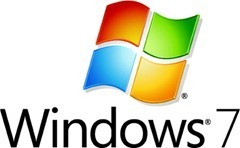November 11, 2009 at 3:23 pm
 Hello everyone,
Hello everyone,
Since the release of Windows 7 exactly three weeks ago it has sold more than any other previous version of Windows. The pre-release sales were even hotter – Windows 7 was pre-ordered more than Windows XP and Vista combined!!
The vast majority of Windows 7 sales (both pre and post release) is that of the Upgrade version. Not many people are buying Windows 7 in the Full version. It’s a “no brainer” – anyone with a valid, licensed copy of Windows XP or Vista qualifies for any Upgrade version of Windows 7. This consists of basically the entire “Windows world”!
The Windows 7 Full version is more expensive and not needed at all if you have a previous version (XP or Vista) of Windows on your computers hard drive (hidden partitions don’t count). Microsoft encouraged the buying of the Upgrade media during the Widows 7 pre-release campaign, by offering great deals (like the $150 three copy Windows 7 Family pack), and the Upgrade version is still the best way to go now (see my previous post at: https://randythetechprofessor.com/how-not-to-pay-retail-price-for-windows-7). So, “piece of cake” right? Not quite!
It seems that many users are having problems doing a clean (custom) install with the Windows 7 Upgrade media (installing and activating). Apparently Microsoft didn’t clearly document the clean (custom) install with Upgrade media procedure before shipping Windows 7 to millions of consumers on Oct.22. What to do?
Today I want to refer you to Paul Thurrott. Like Ed Bott and Woody Leonhard, Paul Thurrott is another Microsoft “guru” who has “gone to the head of the Microsoft class”. Paul is the editor of the Supersite for Windows, an author of over 20 books and appears weekly on the Windows Weekly podcast with Leo Laporte. But above all, Paul Thurrott is a consumer advocate whose main objective is to help you and me as users. If that means “taking Microsoft to task” then so be it! Paul watches out for the consumer by giving us valuable information in an unbiased manner. I have been influenced greatly by the writings and teachings of Paul Thurrott!
Everything that you want to know about a custom install of Windows 7 using Update media is here (http://www.winsupersite.com/win7/clean_install_upgrade_media.asp). The clear, well organized documentation makes everything so simple. Fabulous! No one has worked harder than Paul Thurrott investigating the matter and then putting the facts out. Thanks Paul!!
Professor Randy says: Performing a custom install upgrade of Windows 7 is now a “piece of cake” thanks to the information in the writings of Paul Thurrott!
November 10, 2009 at 3:56 pm
 Hello everyone,
Hello everyone,
What a treat!! Today Woody Leonhard writes as a guest blogger. I’ve mentioned Woody before (https://randythetechprofessor.com/windows-7-rolls-out-all-over-the-world) and he is one of the best Microsoft “gurus” in the business! Woody’s ideas on using Microsoft’s Automatic Update are somewhat unique and totally thought provoking!
MS-DEFCON System
I have a rating system that lets individual Microsoft consumers know when it’s safe to install patches. I call it the Microsoft Patch Defense Condition Level, or MS-DEFCON for short. It’s modeled after the US armed forces DEFCON system.
MS-DEFCON 1: Current Microsoft patches are causing havoc. Don’t patch.
MS-DEFCON 2: Patch reliability is unclear. Unless you have an immediate, pressing need to install a specific patch, don’t do it.
MS-DEFCON 3: Patch reliability is unclear, but widespread attacks make patching prudent. Go ahead and patch, but watch out for potential problems.
MS-DEFCON 4: There are isolated problems with current patches, but they are well-known and documented here. Check this site to see if you’re affected and if things look OK, go ahead and patch.
MS-DEFCON 5: All’s clear. Patch while it’s safe.
The MS-DEFCON system assumes that you have your Windows XP, Vista, or Windows 7 firewall turned on, that you’re using an up-to-date antivirus program (I use Microsoft Security Essentials, which is free, and I vastly prefer it to the giant expensive AV packages) and some form of hardware protection, like almost any router.
The MS-DEFCON level also assumes that you’re using Firefox 3, not Internet Explorer.
I firmly believe that Microsoft’s Automatic Update is for chumps, and I’ve said so for years: go ahead and let Microsoft notify you when it wants to install something on your computer, but don’t blindly allow the “Softies” to install whatever they want. Follow the instructions in any of my books to disable automatic updating, or click Start | Control Panel | Security Center (in Windows 7, Start | Control Panel | System and Security | Windows Update) and take it from there.
In general, I apply Outlook Junk E-mail Filter updates as soon as they’re available. Why? Microsoft hasn’t screwed up any of them too badly – and the one bad Junk E-mail Filter update was patched quickly. You’re better off applying those updates than letting them slide for a week or two.
Many of my readers have written asking about non-critical updates that are offered by Windows Update, Office Update, and/or Microsoft Update. Unless you have an immediate, painful, obvious reason to install one of them immediately, I’d avoid them like the plague. Microsoft has really screwed up several hardware patches, in particular. Don’t trust Microsoft to deliver hardware updates; go to the hardware manufacturer’s site and install them manually. If your computer stops working, you only have yourself to blame!
For advice on updating non-Microsoft software, I recommend Secunia’s free-for-personal-use Personal Software Inspector (http://secunia.com/vulnerability_scanning/personal).
Best wishes,
Woody Leonhard
(http://www.askwoody.com)
Professor Randy says: Do you really want to allow Microsoft (or anyone for that matter) to install software on your computer whenever and however they so choose???
November 9, 2009 at 12:48 pm
 Hello everyone,
Hello everyone,
As I’m sure you know, Windows 7 was released a little less than three weeks ago and the reviews have been excellent. The overwhelming majority conclude that Windows 7 is a fantastic OS, the best that Microsoft has ever produced. Everyone is buying Windows 7.
The retail price for Windows 7 ranges from $120 for a Home Premium upgrade to $320 for a fully licensed copy of Windows 7 Ultimate.
But what would you say if I told you that in some (perfectly legal) cases you can buy Windows 7 for 55% less, 58% less, and up to 85% less than retail? What would you say if I told you that in other cases you can get Windows 7 absolutely free?!!
Well you’re going to have to say something soon because today Ed Bott tells you how to get Windows 7 much cheaper!
First a few words about Ed Bott (I have never met him nor communicated with him). Of all the Microsoft “gurus” out there, Ed is amongst an elite few at the “top of the heap”. Ed Bott is “an award-winning technology writer with more than two decades’ experience writing for mainstream media outlets and online publications, and has written more than 25 books about Microsoft Windows and Office”.
All that is fine and good, but what I like most about Ed is his passion for consumer advocacy. Ed “does not own stock or have any other financial interest in Microsoft”. Ed “does not accept gifts from companies he covers”. Ed is genuinely interested in helping you and me and if he has to “call Microsoft on the carpet” he does not hesitate. In other words, Ed’s got our back!! I have been influenced greatly by the writings and teachings of Ed Bott!
OK. The article can be found here: (http://tinyurl.com/yzu7olf). Enjoy saving money!
Ed tells you have to save “oodles of money” by looking into these different categories:
1) Upgrades
2) Special deals for students
3) Subscription to TechNet Plus or Microsoft Developer Network
Professor Randy says: Don’t ever pay retail price for Windows 7, and by all means follow the tech writings and advice of Ed Bott!!
November 6, 2009 at 1:26 pm
 Hello everyone,
Hello everyone,
As I’m sure you know, if you use a PC you must run antivirus and antispyware software. You also probably know that a short time ago (Sept. 29) Microsoft released it’s free security suite Microsoft Security Essentials (http://www.microsoft.com/Security_Essentials).
A lot of people have been asking about Windows Security Essentials and today I would like to give you quotes from two “tech gurus” that I have been reading for years and would trust with my life. What do they have to say about Windows Security Essentials?
Woody Leonhard (http://www.askwoody.com/tag/microsoft-security-essentials)
“You all know by now that I’ve thrown away AVG Free and replaced it with Microsoft Security Essentials, on all of my many machines, right?
I wrote about MSE in my Windows Secrets Newsletter column. (Yes, that’s in the paid version, but you can subscribe and pay any amount you choose.)
A small antivirus analyzing group called AV-Comparatives.org has just published a white paper that looks at how well antivirus products handle viruses that are common, in the wild, right now.
MSE scored in the top category “Advanced +” right up there with Symantec, F-Secure and Kaspersky, and ahead of ESET, Sophos, AVG, McAfee, AVAST and Avira.
MSE’s a great product. Free. Fast.”
Dwight Silverman (http://tinyurl.com/ydzy4de)
“I’ve been using the beta since it was first offered in June on Windows XP, Vista and Win7 systems. I am happy enough with Security Essentials that it has replaced AVG Free as the antimalware package on all my Windows systems.
I have been particularly impressed with its minimal system footprint. Right now, running in a Windows 7 virtual machine in VMware Fusion on my iMac, it’s taking up just over 3 megabytes of memory. In the months that I’ve been running it, I’ve not been able to discern a performance hit.
It’s also fast. I just ran a quick scan on this Win7 system, and it completed checking 12.6 GB and the Registry in 55 seconds. On my 64-bit, home-built Windows 7 PC, Security Essentials took 1 minute 20 seconds to scan 59 GB of data.
Microsoft Security Essentials also is non-intrusive. The only popup messages I’ve seen come when it’s doing a scheduled scan. Fast and light is good, but when it comes to anti-malware protection, effectiveness is what matters. So far, I’ve not encountered any spyware or viruses in the months I’ve been testing Security Essentials”.
Professor Randy says: Check out Windows Security Essentials and also check out the tech blogs of Woody Leonhard and Dwight Silverman!
November 5, 2009 at 1:37 pm
 Hello everyone,
Hello everyone,
Because I have an “obsessive-compulsive” personality and because I want to thoroughly enjoy my computing experience, I do everything possible to keep my computer running fast. In Part 1 of this series I showed you two ways to speed up your computer and in Part 2 I showed you three more ways, so thus far we have five ways in all. Let’s not stop yet!
Today in the third and final post in this series, I would like to show you a few more ways to speed up your computer.
6) Compact The Registry. The Windows Registry has literally thousands of entries (many that have ceased to do anything positive), and is growing constantly. Over time it will become huge. You don’t want a huge inefficient registry! After you have cleaned the registry (step 5 in part 2) you should optimize it by making it smaller while improving it’s structure. What to do?
A) Run NTRegOpt (http://www.larshederer.homepage.t-online.de/erunt). Maybe once a month. “The optimization done by NTRegOpt is simply compacting the registry hives to the minimum size possible”. I have used this little gem for years (in Vista with proper administrative privileges) and it works like a charm!
7) Defragment the Hard Drive. Over time, files will break up into chunks and become spread out (fragmented) all over the hard drive. In order to find these files (access the information) your hard drive has to work harder (jump to all the various file chunk locations) which takes more time. You don’t want a fragmented hard drive! What to do?
A) Run the built in Windows Disk Defragmenter (Start>Search Box>type dfrgui>Enter).
B) Run MyDefrag (formerly JkDefrag) (http://www.mydefrag.com). My Defrag is just so good! I’ve been using it for years and it does a more efficient and complete defrag. than the built in Windows defrag. tool. MyDefrag is a “defragmenter and optimizer”. You’ll love it!
8) Get more RAM (Random Access Memory).This is the #1 thing that will increase your systems speed. RAM stores information for your system components (easier to access than the hard drive). The more RAM you have, the easier your machine (CPU) has to work to access this information. If you don’t have at least 2GB of RAM, get more! What to do?
A) Go to Crucial (http://www.crucial.com). Run the Crucial Memory Advisor Tool (“to find guaranteed-compatible memory for your computer”), buy the memory (from Crucial) that is right for your system and install it. Installing memory is not difficult and there are many video tutorials on the Internet.
9) Get a Graphics Card that has it’s own memory. I’ll just touch on this briefly. Some graphics cards don’t have any memory of their own and they must “steal” memory from RAM. If you don’t have a “dedicated” graphics card get one in your next computer and any programs that are graphic intensive will be speeded up considerably. If your video card is “onboard”, you can turn off your systems graphics (visual effects): Control Panel>Performance Options>Adjust for best performance (visual effects).
10) Uninstall Unused Programs. If you have programs on your computer (hard drive) that you no longer use, uninstall them and then run the registry cleaner. Unused programs take up valuable disk space and when you remove them you will help increase your computers speed. What to do?
A) Run Revo Uninstaller (http://www.revouninstaller.com). I have been using Revo Uninstaller since it came out (about a year and a half ago), and it is just so much better than the built in Windows Add/Remove Programs. Revo Uninstaller will uninstall the program and then remove additional files, folders and registry keys. Absolutely amazing!
Professor Randy says: Be happier and more productive with a computer that doesn’t slow you down – adjust your computer for maximum enjoyment and productivity!
November 4, 2009 at 3:35 pm
 Hello everyone,
Hello everyone,
In my previous post (https://randythetechprofessor.com/how-to-speed-up-your-computer), I told you that as a computer “geek” with an “obsessive-compulsive” personality, I work hard to keep my computer running as fast as possible by performing regular system maintenance.
Yesterday I gave you two ways to speed up your computer (I will list those again), and today I would like to give you three more along with the “how to” to accomplish the task. The programs that I recommend are free and you should run them maybe once a week. Tomorrow I will finish this series of posts by giving you a few more ways to speed up your computer.
1) Clean the Hard Drive. Over time the hard drive gets cluttered with all kinds of unnecessary files (temporary files, log files, backup files, dump files, etc.). These files are useless and can take up precious disk space. Get rid of these files! What to do?
A) Run the built in Windows Disk Cleanup Utility (Start>Search Box>type cleanup>Enter).
B) Run CCleaner (http://www.ccleaner.com). CCleaner removes all kinds of useless files.
C) Run PureRa (http://raproducts.org/purera.html). PureRa “removes files from your computer that other mainstream cleaning programs tend to oversee”. This product is relatively new – I have tried it on my Vista Laptop and it did a good job cleaning out some odd file types.
2) Scan For Malicious Software. Malicious software is adware, spyware, virus, trojans, worms, rootkits, etc. All of these malicious programs can slow down your system “to a crawl”. Get rid of this malware! What to do?
A) Run Avira AntiVir Personal ( http://www.free-av.com). Install, update regularly, and run.
B) Run Malwarebytes Anti-Malware (http://www.malwarebytes.org). Install, update, and run.
C) Run SUPERAntiSpyware (http://www.superantispyware.com). Install, update, and run.
3) Disable Programs that Auto-Start. I talked about this yesterday. Get Mike Lin’s programs.
4) Disable Unnecessary Services. I talked about this yesterday. Go to Black Viper’s site.
5) Clean the Registry. Over time the Windows Registry will fill up with many entries that are no longer valid and that point to nowhere. These superfluous entries take up space and can adversely affect the behavior of your system. Get rid of these registry entries! What to do?
A) Run CCleaner (http://www.ccleaner.com). Run the Registry function. I have found it very safe.
B) Run WinASO Registry Optimizer (http://www.winaso.com). I have used it for years and have not had one problem!
Professor Randy says: A clean, fast computer is a beautiful thing! It can be yours with just a minimum of regular maintenance.
November 3, 2009 at 12:45 pm
 Hello everyone,
Hello everyone,
I am a “geek” and I also have an “obsessive–compulsive” personality. This is not always a good combination! I am very meticulous, absorbed, almost fixated with my computers appearance and performance, and believe me it’s very hard to be a perfectionist with a computer. You can clean, maintain, optimize, upgrade, and tweak a computer every minute of every day if you don’t “get a grip”. My wife has helped me to “chill out” a little and realize that my computer is, after all “just a machine”. Just a machine?! That’s easy for her to say but not for me (we bought her her own computer!).
There is so much unnecessary junk on computers these days that it drives me crazy. I feel so sorry for the uninformed users whose hard drives are full of bloated program files and whose computers are so slow that they can’t even work! I knew a guy who got up in the morning, turned on his computer, took a shower, ate breakfast, then returned to his computer which was just finishing to boot up. There has got to be a better way!! Luckily there is.
There are many ways to speed up your computer. Today I’m going to show you two ways that aren’t mentioned as much as some others.
1) Don’t allow your programs to auto-start when you turn on your computer. Start your programs when you want to not when they want to. Many programs will try to register themselves to run at system startup and you won’t even know it. Over time you’ll have like 30 programs starting up when you turn on your computer and your “boot time” will take forever. What to do?
A) Get Mike Lin’s StartupMonitor (http://www.mlin.net/StartupMonitor.shtml). Every time a program tries to sneakily register to run at startup, a small box will pop up on your screen and ask you if you want to allow this. Click NO every time!! I’ve been using StartupMonitor for years and at the moment I have TWO programs running at startup (one is StartupMonitor) and over TWENTY that have tried but have been “nixed” thanks to Mike Lin’s little program (you don’t even have to install it!).
B) If you have not been using StartupMonitor and you have no idea how many programs have registered to run at startup, get Mike Lin’s Startup Control Panel (http://www.mlin.net/StartupCPL.shtml) a “nifty control panel applet that allows you to easily configure which programs run when your computer starts”. The two programs StartupMonitor and Startup Control Panel compliment each other and go together like “two peas in a pod”.
2) Disable unnecessary services! Services are programs that run in the background and support specific functionality in the Windows OS. Third party programs can install services too. Many services that are running (by default or otherwise) are unnecessary and can be disabled. Disabling unneeded services will improve system resource usage, startup time, shutdown time and reduce unnecessary RAM usage. If you’re a “gamer”, disabling services will even reduce “stuttering” when you game. I counted 133 services in my Windows Vista box and I’ve disabled over half! What to do?
A) Go to “Black Viper” (http://www.blackviper.com). The day I found Charles “Black Viper” Sparks was an “Oh Happy Day”! Charles was off line for awhile but now he is back and he is No. 1 when it comes to service configuration. You’re going to have to read and study a little bit but it is well worth it. Charles gives you his service recommendations for Windows XP, Vista and Windows 7. Black Viper explains everything carefully and in an easy to understand way. I disabled my services one by one and I’ve never had any problems. I’m pretty much “bare bones” at the moment. My computer boots up in about 18 seconds (of course “obsessive–compulsive”)!
Professor Randy says: You control the computer – don’t let it control you!! Greatly increase your computing pleasure by eliminating unnecessary startup programs and unneeded services.
November 2, 2009 at 3:11 pm
Hello Everyone, 
In my last post (https://randythetechprofessor.com/10-scary-things-about-facebook), I told you that Facebook scared me and then I went on to tell you why. I listed ten alarming and dangerous things that can happen to you as a user of Facebook. I’m actually not “scared of” Facebook but “afraid for” Facebook users because I’m almost certain that most don’t understand the risks involved. In my last post I revealed ten risks and believe me there are more every day.
Before you think I’m paranoid I want to tell you up front that I use Facebook and think it has great merit as it allows social interaction between family and friends. I’m not advocating paranoia by any means, just caution.
Today I’m going to give you the secret to solving scary Facebook problems: THE SECRET is in THE SETTINGS!!! I’ll cover the ten that I listed in my last post.
1) you will instantly reveal personal information to potential identity thieves.
In Profile Settings (Profile): set this option to be: “Only my friends”.
2) photos and videos will be posted that in the future may be embarrassing to you.
In Profile Settings (Photos Tagged of You): set this option to be:“Only my friends”.
3) criminals will see what you are doing minute-by-minute and use this information for their benefit.
In Profile Settings (Status Updates): set this option to: “Only my friends” (or “No one”).
4) people you have never met will know at all times whether you’re on-line or not.
In Profile Settings (Online Status): set this option to be: “No one”.
5) you will give unknown members of the Facebook community access to your friends list and provide them with additional data about you, which could assist them in identity fraud.
In Profile Settings (Friends): set this option to be: “Only my friends”(or “No one”).
6) the entire Facebook community will see personal information that has been published on your wall by yourself and others.
In Profile Settings (Wall): set this option to be: “Only my friends” (as a minimum).
7) all Facebook users will know your contact details (real address, website address, email, phone number).
In Contact Information (Email, Phone, Address, IM, etc.): set this option to: “No one”.
8) the world will be able to find you on Facebook using external search engines like Google, Yahoo and MSN.
In Search Settings (Allow Public Search Listing…): set this option to: “No”.
9) you will unwittingly be revealing your profile when an identity thief attempts to “friend request” you, and you respond with a message asking “Do I know you?”.
In Poke, message and friend request Settings: set this option to: “Basic Info”.
10) applications will allow profile information to be be shared with the application’s author.
In Applications Settings: set this option to be: “Only my friends” (as a minimum).
Now not so “scary” huh? These are some basic tips to “whet your appetite” and get you on the road to using Facebook safely. If you would like to continue investigating, I recommend taking a look at these two up to date sites:
http://tinyurl.com/qosmml (ReadWriteWeb.com)
http://tinyurl.com/q4h3gl (MakeUse Of.com)
Professor Randy says: Go ahead and have fun with Facebook but know the risks. Protect yourself by studying and then carefully configuring the settings!!
October 30, 2009 at 1:45 pm

Hello everyone, 
In my previous post (https://randythetechprofessor.com/be-aware-of-facebook) I told you that I thought Facebook was exciting but that it scared me. What I actually mean is that Facebook users scare me. As a Facebook user I’m no expert (I’ve only had an account for about two months and I don’t use it much), but as a Facebook investigator I have spent hours studying the Facebook security/privacy settings (default and options) and that is why Facebook scares me. ID fraudsters will “eat you alive”, people you don’t know will harvest information about you, photos of you will suddenly appear on the internet and much more. Today, the problem.
Here are just some of the things that I have found:
1) you will instantly reveal personal information to potential identity thieves.
2) photos and videos will be posted that in the future may be embarrassing to you.
3) criminals will see what you are doing minute-by-minute and use this information for their benefit.
4) people you have never met will know at all times whether you’re on-line or not.
5) you will give unknown members of the Facebook community access to your friends list and provide them with additional data about you, which could assist them in identity fraud.
6) the entire Facebook community will see personal information that has been published on your wall by yourself and others.
7) all Facebook users will know your contact details (real address, website address, email, phone number).
8) the world will be able to find you on Facebook using external search engines like Google, Yahoo and MSN.
9) you will unwittingly be revealing your profile when an identity thief attempts to “friend request” you, and you respond with a message asking “Do I know you?”.
10) applications will allow profile information to be be shared with the application’s author.
Scary stuff right? But fear not! In my next post (Monday Nov. 2) I’ll teach you what you can do to stay safe and protected. The sky is not falling!!
Professor Randy says: Facebook can be challenging but don’t be paralyzed! Allow the challenges of Facebook to help you discover how to use and enjoy it.
October 29, 2009 at 10:51 am
Hello everyone, 
As I’m sure you know, Facebook is everywhere – but do you realize how huge it really is? Facebook is so dominant that you have to be aware of it and I have to mention it. Facebook excites me and scares me at the same time. Tomorrow I’ll tell you why it scares me.
Today I want to give you an article written by Henry Blodget in The Business Insider (http://tinyurl.com/yfnl3px) in which he quotes Perry Drake of database marketing firm Drake Direct:
Here’s a startling conclusion by Perry Drake of database marketing firm Drake Direct:
Facebook accounts for 25% of U.S. online pageviews.
Perry’s analysis was prompted by a study showing that the figure in the U.K. is 1 in 7. He pulled some Compete charts and concluded that the number here is 1 in 4.
Google, meanwhile, accounts for 1 in 12 pageviews (8%). And Facebook is rapidly closing in on Google in terms of visits and uniques.
Facebook’s power, in other words, continues to grow.
Perry Drake says the following:
“My research revealed some very interesting facts. First of all let me say, that in the US, Facebook accounts for a significantly higher percent of our total page views than in the UK. In the UK, Facebook accounts for 15% of the total pageviews (or 1 in 7). In the US Facebook accounts for, now get this, 1 in every 4 or 25% of our total pageviews”.
Unbelievable!
Google on the other hand accounts for only 8% of the total pageviews (or 1 in 12).
Is this surprising? Not really. Facebook is, by design, much more engaging. So we should expect this fact.
However, when we look at total number of visits to these two sites, we notice that Google does have an edge, but, surprisingly, that edge is quickly slipping away. Ouch!
Even for the metric “monthly unique visitors,” we can see that Google is also losing its edge here as well.
Do you think Google is a bit concerned?
Professor Randy says: Be aware of Facebook and how it is evolving. Only then will you be able to understand it and hence use it properly.
 Hello everyone,
Hello everyone,
 Hello everyone,
Hello everyone, Hello everyone,
Hello everyone, Hello everyone,
Hello everyone, Hello everyone,
Hello everyone,



